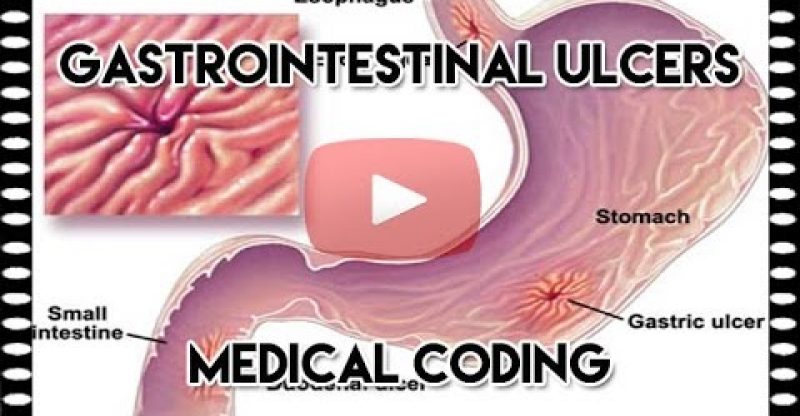ICD-10-CM Coding Guidelines — Understanding Gastrointestinal Ulcers
ICD-10-CM Coding Guidelines — Understanding Gastrointestinal Ulcers http://www.cco.us/icd-10-coding-training-certification-products-yt
FREE ICD-10 Practice Exam http://www.cco.us/free-icd-10-cm-online-practice-exam-yt
“From the December 2013 Coding Certification Q and A Webinar”: Free for all! Get CEU’s!”
Another thing about ICD-10 is that you kind of need to understand the disease process when coding an ICD-10. You do that with ICD-9 but it’s so much more in ICD-10, so I thought I’d pull out something, like one of the body systems and then go in and let’s talk about that and understand the disease process. So, I picked Gastrointestinal Ulcers just because I had information on it, but it would be something that some of you might be able to learn from.
The first thing with Gastrointestinal Ulcers you would need to know the type of gastrointestinal ulcers. We have gastric, duodenal, peptic, gastrojejunal. These are the four types of gastrointestinal ulcers. Now, the next thing when understanding the disease process, you’re going to need to know the contributing factors, because when you’re coding, unless you’ve given a definitive diagnosis in physician-based coding, you would code the signs and the symptoms – so we’re going to talk about those — and to back up the treatments or that the person has a current condition, you’re going to need to know the contributing factors that will show up in the case.
Contributing factors: reflux, hyperacidity in the stomach, extended use of anti-inflammatory drugs (aspirin or ibuprofen, there’s a lot of arthritis medication that will be an influence), steroids, alcohol, smoking, and presence of Helicobacter pylori bacteria.
They actually will go in and do an EGD and take a sample and make sure that you don’t have this because if you have these bacteria, it will cause ulcers.
The signs and symptoms to look for: burning pain in the stomach or epigastric region (which would be up in the esophagus in the back of the throat), weight loss, nausea, vomiting, anemia – from blood loss, because when you get an ulcer it can actually be a bleeding ulcer.
What type of testing do they do to determine that you have an ulcer? They do upper GI’s and barium studies (endoscopy) where they actually have you drink a chalky substance and they take an x-ray. They go in endoscopically and do an upper GI where they literally take a camera in there and they go in, they take pictures to see if there’s anything going on. Then they can actually visualize the lining of the epigastric area and the gastric (the stomach) to see if there’s an ulcer.
Then, there are several blood tests that they can do that would indicate whether a person was suffering from an ulcer; they can do a hemoglobin test, the hematocrit and serum gastrin and amylase levels. The hemoglobin and the hematocrit are decreased in
a patient with bleeding from the ulcers, and that’s because this is blood levels. Serum gastric and serum amylase levels are actually increased. Then, they can do stool samples, which can be positive for occult blood. That’s where they literally take feces and put it on this little card and it turns to a specific color if it’s got blood in it.
Get more ICD-10 coding tutorial, ICD-10 training, ICD-10 certification, medical coding training, medical coding certification at http://www.cco.us/cco-yt
source






